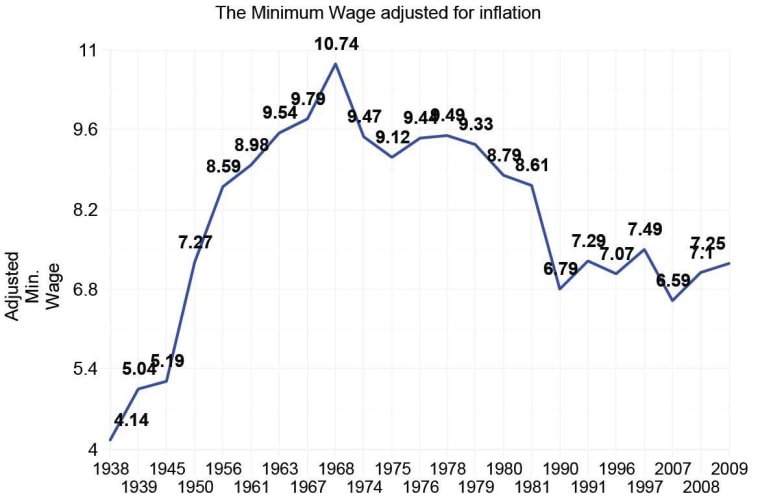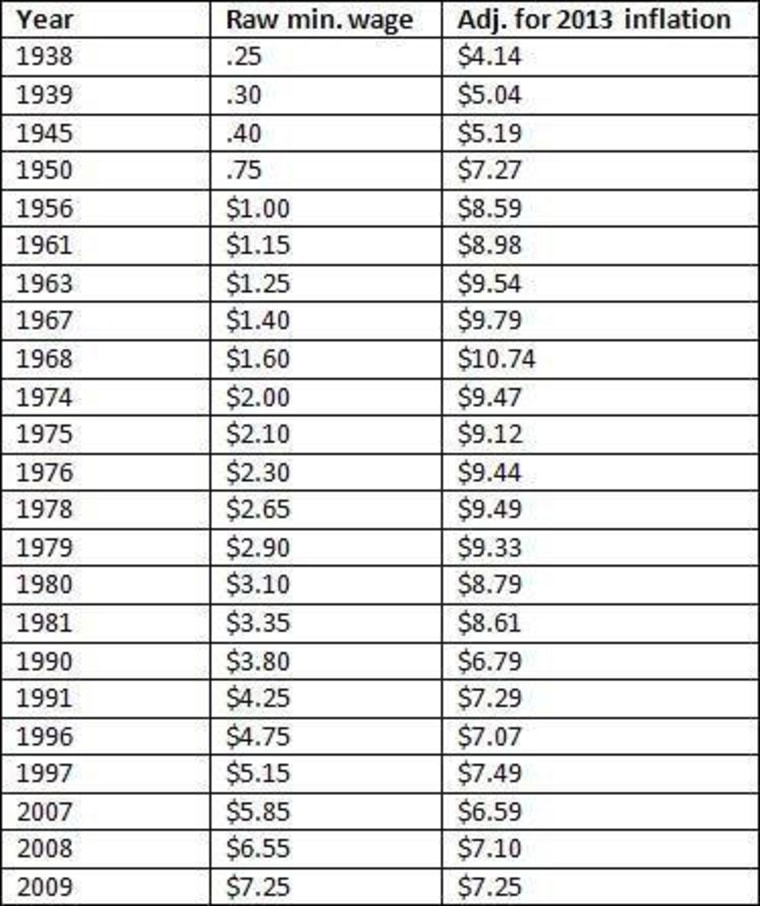
Today's minimum wage is on par with what it has been, adjusted for inflation, over the last 20 years. But the flattening of the minimum wage is part of a generational decline.
In short, as fast-food workers protest their wages today across the country and urge a minimum-wage increase, public policy has not kept up with how much things cost.
The minimum wage peaked in 1968. Even though it was just $1.60, it had the buying power today of $10.74. But from then on, despite the raw minimum wage being increased 14 times, it has not kept pace with inflation.
Someone working full time - 40 hours a week - at the minimum wage today of $7.25 an hour, would make just $15,080 for the year.
In his State of the Union in February, President Obama called for a minimum-wage hike to $9 an hour, declaring, "Let's declare that in the wealthiest nation on Earth, no one who works full-time should have to live in poverty."
The government considers any individual making less than $11,490 a year to be in poverty. A single mother supporting two children, however, would be considered poor if she made less than $19,350 a year, certainly below the minimum wage.
Even at $9 an hour, she would only make $18,720 for the year.

